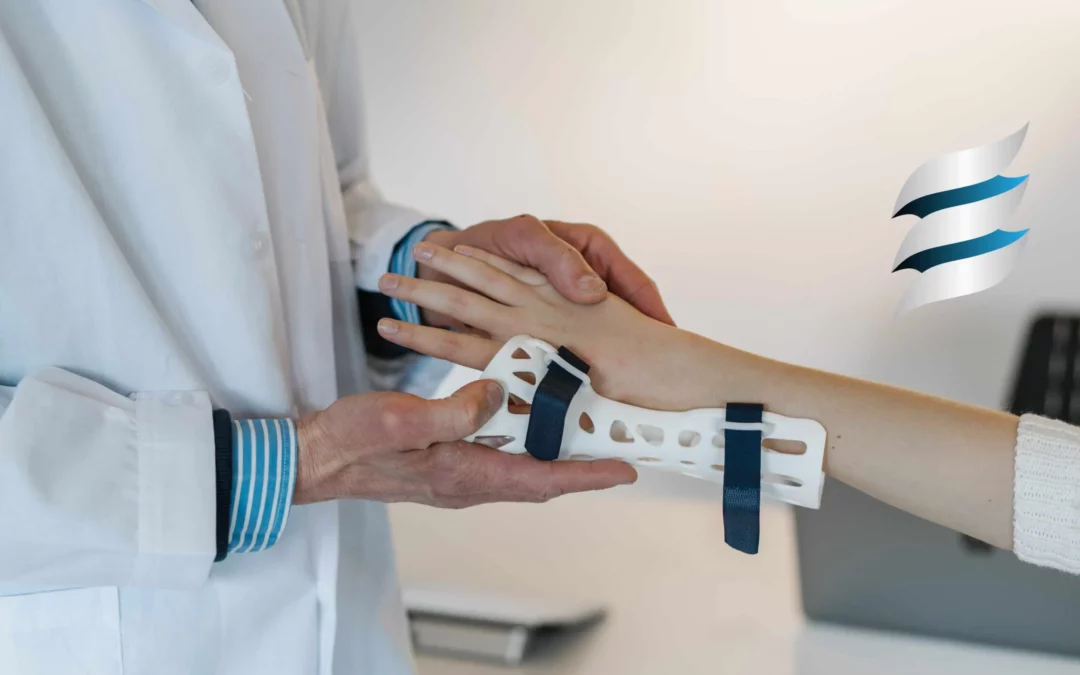What is an Orthosis?
An orthosis is any artificial brace or support for the limbs or spine. These devices are designed to support or improve functional movement in a given region of the body by either decreasing pressure, or accommodating structural or biomechanical changes resulting from a disease or injury process. They can be generally grouped in to two main categories: orthoses for immobilization, with the device exerting a static force on a joint thus stabilizing the segments, or orthoses for mobilization, wherein the device involves moving parts optimizing the available motion at the moving segments.
Common Orthoses
Orthoses can be developed for any joint of the body based on need, however the most common areas often treated with orthotics are the lumbar spine and the foot.
Spine orthoses are a rigid, semi-rigid, or soft outer shell, and can be classified as either supporting or stabilizing. This surrounding device creates a “corset” effect around the spine, thus creating 360° of compression and support to the spinal segments.
Foot orthoses can come in many different forms, commonly as a rigid or semi-rigid shoe insert designed to impact biomechanics from a bottom-up perspective. In general they are designed to improve arch support related to the triplanar motions of the foot including pronation and supination, thus improving the mechanics of the global kinetic chain.
When to use an Orthosis
In general, orthoses are used to minimize pain and maximize function, however, a number of considerations should be taken when deciding on a particular orthosis including the individual’s goals, functional limitations, soft tissue or nerve damage, or range of motion limitations.
Spinal orthoses can be used in an acute stage in order to stabilize an injury to the spine to allow for proper healing and alignment, as well as for more chronic conditions to maintain curvature of the spine and prevent loss of stability in the lumbopelvic and spinal segments.
Foot orthotics can be inserted into an individual’s shoes, and are designed to redistribute ground reaction forces and prevent maladaptive force vectors creating altered biomechanics of the lower extremity as a whole, as well as globally throughout the entire kinetic chain.
Other orthoses that may be considered include ankle braces, ankle-foot orthoses, knee-ankle-foot orthoses, and a variety of upper extremity orthoses, and one should always seek medical advice from a licensed physician and orthotist to determine the most appropriate device.
Off-the-Shelf vs. Custom Orthoses
Custom-made orthotics are generally seen as the gold-standard, however there are a number of retail varieties available that can be used as a front-line option, or as an assessment or screening tool to determine if a custom orthotic would be beneficial. In the case of foot orthotics, evidence has shown little to no difference in outcomes from custom-made versus prefabricated, off-the-shelf orthotics. Therefore off-the-shelf orthotics may be a good, more cost-effective option for improving symptoms and assessing further if symptoms are related to a biomechanical fault.
References
- Elattar O, Smith T, Ferguson A, Farber D, Wapner K. Uses of Braces and Orthotics for Conservative Management of Foot and Ankle Disorders. Foot & Ankle Orthopaedics. July 2018. doi:10.1177/2473011418780700
- Schott C, Zirke S, Schmelzle JM, Kaiser C, Fernández LAI. Effectiveness of lumbar orthoses in low back pain: Review of the literature and our results. Orthop Rev (Pavia). 2018;10(4):7791. Published 2018 Dec 6. doi:10.4081/or.2018.7791
- Tran K, Spry C. Custom-Made Foot Orthoses versus Prefabricated foot Orthoses: A Review of Clinical Effectiveness and Cost-Effectiveness [Internet]. Ottawa (ON): Canadian Agency for Drugs and Technologies in Health; 2019 Sep 23. Available from: https://www.ncbi.nlm.nih.gov/books/NBK549527/




